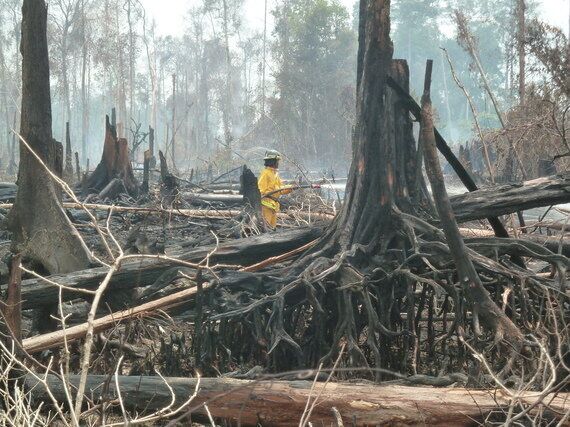
In many countries the most visible symbols of climate change are linked with the fossil fuel economy. Gas guzzling 4X4 vehicles, expanding airports and coal-fired power plants understandably among them. But what of land and forests? For some nations the changing state of their natural systems is a bigger issue than their use of fossil-based energy. One is Indonesia.
Recent months have seen the usual dry-season forest and land fires burning across the island of Sumatra, predictably followed by complaints from Malaysia and Singapore, where people living across the Straits of Malacca and downwind of the conflagrations are finding their air polluted and health threatened. What is less visible, but nonetheless a very major concern, is the simultaneous release of vast quantities of carbon dioxide.
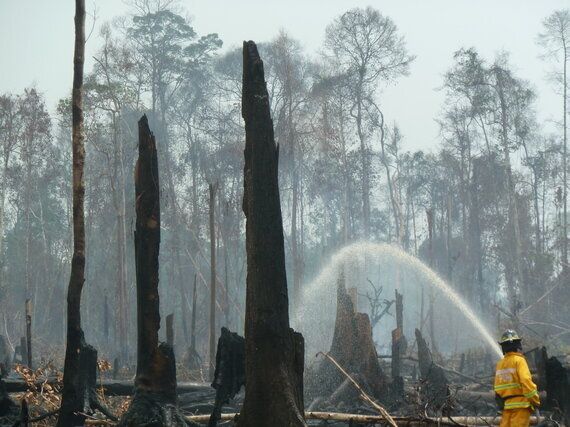
Much of Sumatra is covered with extensive peatlands. Peat is comprised of unrotted plant remains that have built up over thousands of years in waterlogged conditions. Plants trap carbon dioxide from the air, turn into organic material and when that gets locked away in the wet ground it is out of the atmosphere. So long as the plants growing on top continue to provide a stream of new material to get wetted away in a new layer, the peat is not only a store of carbon, but also a mechanism for removing it from the air.
When actively accumulating peatlands are damaged or degraded there is thus a double downside for the climate, not only ending their work in drawing down carbon dioxide, but also releasing what they've already captured. Whereas in my travels around Britain I am used to seeing various species of Sphagnum mosses comprising the living top layer of peat, especially across the extensive blanket bogs of our raw temperate uplands, in Sumatra (and across much of Borneo as well) the main ecosystem supplying the flow of plant remains are peat swamp rainforests.
Some areas of these wet forests with their magnificent tall trees remain intact, but across most of Sumatra they've been cleared of natural forest and drained, exposing peat to the air, and as it dries out to increased fire risk. Peatland blazes are the main reason Indonesia appears in the global country top ten of greenhouse gas emitters and why as the world approaches the COP21 climate change summit such an emphasis is being placed on stopping and controlling them. The carbon emissions from peat fires can be absolutely huge.
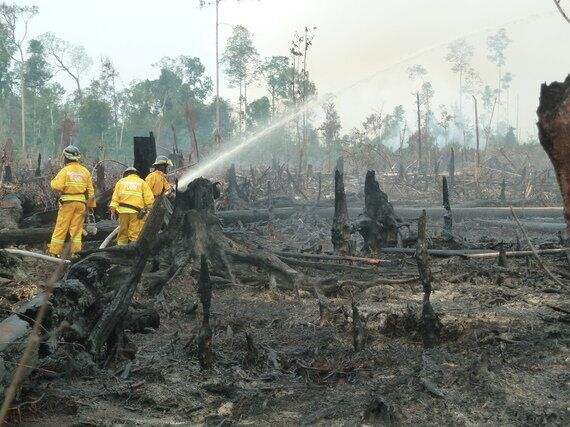
Take for example the exceptionally severe El Niño of 1997 (we are in another exceptional one now) when the dry conditions caused fires to destroy millions of hectares of peat swamp forest, releasing up to about two and half billion tonnes of carbon, equivalent to about forty per cent of mean annual global carbon emissions from fossil fuels, contributing to the largest annual increase in atmospheric CO2 since records began. Something clearly needs to be done.
Last month I spent time in the field in Sumatra with a team from Indonesian company Asia Pulp and Paper to see close up some of the challenges inherent in controlling fires. Most are set by smallholder farmers to clear land ready for planting. Other fires are deliberately (and illegally) set to clear patches of forest so that crops might be planted there. I also heard how some acts of arson are linked with "revenge" burning of other farmers' crops because of disputes over land. In all cases, if the fires get out of control, as they frequently do, then vast areas can be quickly incinerated.
At the end of a bumpy track and next to the edge of one APP concession I saw just this, with an area of about two square kilometres of peat swamp forest reduced to blackened stumps and ashes in just a day. Despite the best efforts of fire fighting teams, the blaze continued to burn into an area of government owned timber-producing forest. The charred roots of large forest trees were laid bare as up to two metres of peat that they'd been growing in the day before had been blasted into the atmosphere.
The scene was rendered all the more tragic as this was one of the few areas of reasonably natural forest still in that area. There was no doubt in my mind that one of the most important tasks facing us in limiting the effects of climate change, not to mention the conservation of the wildlife that lives in these forests, is stopping these fires. But how best to do that?
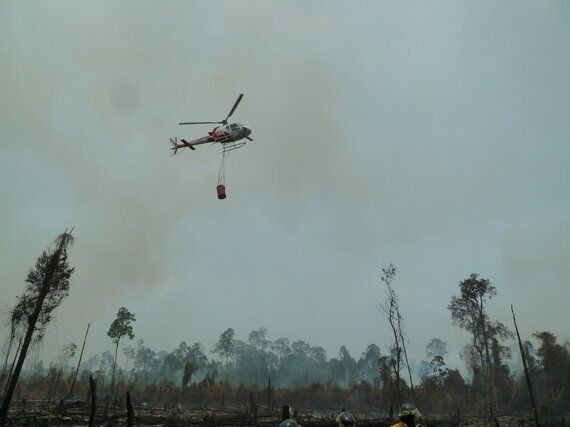
One obvious priority is to find ways to enable smallholder farmers to find sustainable alternatives to the use of burning, for example by having access to machinery, perhaps through a scheme that would enable them to borrow equipment belonging to large companies, so that they can get land ready for planting without resorting to a box of matches.
There is a role for businesses of all sizes to improve how they manage their operations so as to protect peat from fire risk, and there's a vital job for national and provincial governments in enforcing the laws of Indonesia. On top of this multi-stakeholder processes to resolve land disputes would help remove some of the tensions that increase fire risk.
Critical to the whole thing, I discovered, is the need to act at the level of landscapes. This is not least because peatlands and the hydrological systems that keep them wet take no heed of the straight lines drawn across maps by public administrators, dividing up the land between different concession holders. If the forests and peat are to be sustained, then cooperation between multiple actors across large areas is needed. This will be especially important if cutting carbon emissions is to be effectively combined with maintaining and creating the corridors of natural forests that will be needed to conserve animals like the Sumatran Tiger.
APP is trying to do this in ten landscapes across Sumatra and Borneo, in the process aiming to conserve or restore one million hectares of forest. As part of this work, and accompanied by the most comprehensive survey of Sumatran peatlands ever undertaken using cutting edge airborne LiDAR remote sensing technology, the company announced in August that it is to retire around 7,000 hectares of commercial plantation so as to protect the carbon-rich peat beneath, marking the first case anywhere in the world of where plantations on tropical peat are being phased out for conservation purposes .
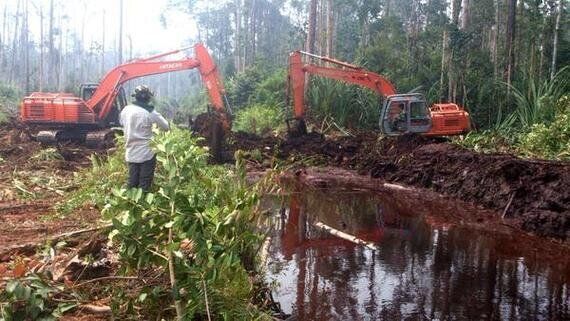
The protection of peatlands from fire in Sumatra is a complex business with no easy fixes. It is, however, a global priority, right up there with the phase-out of coal or the expansion of renewable power. Unlike the technology switching that is necessary in the energy sector though, the peat issue is all about thinking differently, looking afresh at the land, the way we use it and how we might make more intelligent and integrated decisions.
